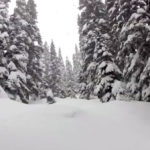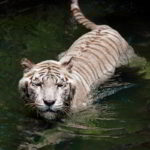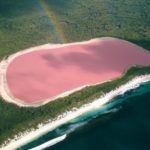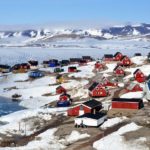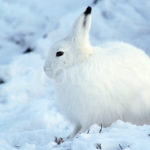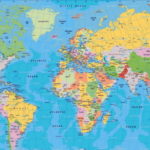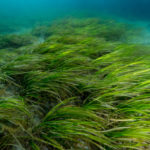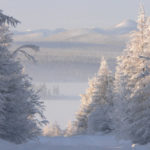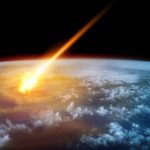25 interesting facts about snowflakes
 As you know, two identical snowflakes do not exist. Some people even devote them to studying for many years, trying to find certain patterns. However, despite the fact that modern technologies make it easy to create snowflakes in laboratory conditions, these studies have not yet led to any noticeable result.
As you know, two identical snowflakes do not exist. Some people even devote them to studying for many years, trying to find certain patterns. However, despite the fact that modern technologies make it easy to create snowflakes in laboratory conditions, these studies have not yet led to any noticeable result.
They are not only white, pink and red snow can often be seen in the arctic and mountainous regions. It is stained with microscopic algae and microorganisms, but there are cases when snowflakes have fallen from the sky already colored.
The Eskimos use 24 words to describe snow in its various states, and the Saami, who live in northern Scandinavia, have 41 words to denote snow and snowflakes.
Snow creaking – noise from crushed crystals of snowflakes. They creak only in frost, and the colder the higher the tone of the creak.
More than three billion people living on Earth have never seen snowflakes.
A snowflake is a complex symmetrical structure consisting of ice crystals collected together. There are many options for “assembly” – until now, two identical snowflakes have not been found.
A crunch of snow can be obtained by compressing mixed salt and sugar. Previously, this technique was often used in dubbing films and in theatrical productions.
There are more than five thousand basic forms of snowflakes, all of them are combined in several classes: stars, plates, columns, needles, spatial dendrites, crowned columns, irregular crystals.
The great astronomer Johannes Kepler in his treatise “New Year’s Gift. About hexagonal snowflakes ”explained the shape of crystals by the will of God. And the Japanese scientist Nakaya Ukichiro called snow “a letter from heaven written in secret hieroglyphs.”
The name of the aforementioned Nakai Ukichiro is the only snowflake museum in the world located in Japan on the island of Hokkaido.
Complex star-shaped snowflakes have a unique geometric shape distinguishable to the eye. And there are more variants of such forms, according to physicist John Nelson of Ritsumeikan University in Kyoto, than there are atoms in the observable Universe.
When they get into the water, the snowflakes make a very high sound, elusive for the human ear, but the fish hear it, but they don’t like it, and therefore they rush all over and go to the depths.
The total number of snowflakes forming per year in the Earth’s atmosphere is about 10 to 24 degrees. That is, it is 1 with 25 zeros.
As scientists have established, snowflakes with the most complex structure usually fall where the climate is especially harsh. And in a milder climate, for example, in central Russia, their structure is usually simpler.
During a snowfall in 1987, a record-breaking snowflake with a diameter of 38 cm was found in Fort Coy (USA, Montana).
On average, the weight of one snowflake reaches 1 milligram.
Snowflakes consist of 95% air, which causes a low density and a relatively slow fall rate, which usually does not exceed 0.9 km/h.
In 1951, the International Commission on Snow and Ice (no matter how ridiculous, but there is one!) Legalized the classification of snowflakes.
Pure snow can be eaten. True, the energy consumption for eating snow is many times greater than its calorie content.
A snowflake is one of the most fantastic examples of self-organization of matter from simple to complex.
In the Far North, snow caked in conditions of extremely low temperature is so hard that an ax rings when it hits it, as if it struck iron.
On average, the diameter of snowflakes ranges from 0.1 to 7 mm.
Each of them is a frozen and crystallized drop condensed from steam. At the same time, they are formed directly from the steam, bypassing the stage of rain.
In order for the snowflake structure to be clearly visible in the photograph (and this is very important for studying its crystal structure), the sample is highlighted in a special way, and the snowflake itself works as a complex lens.
In one cubic meter of snow there are about 350 million snowflakes, each of which is unique.
The basis for the formation of a snowflake is its tiny core. These are icy or foreign dust particles in clouds, around which water vapor begins to condense.
